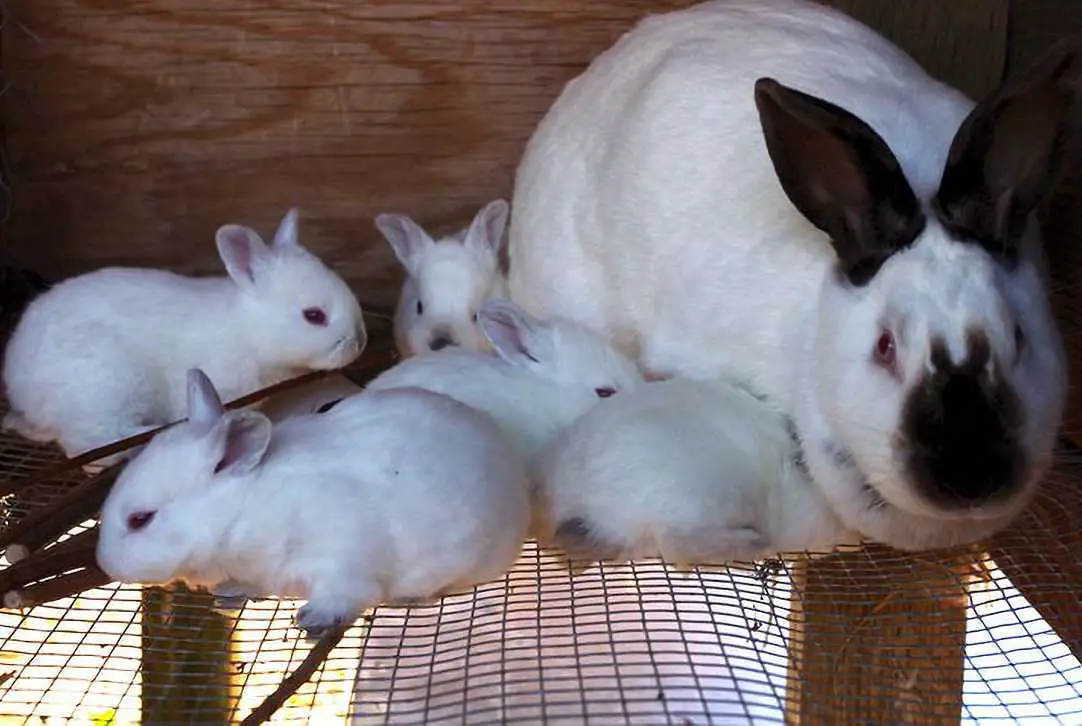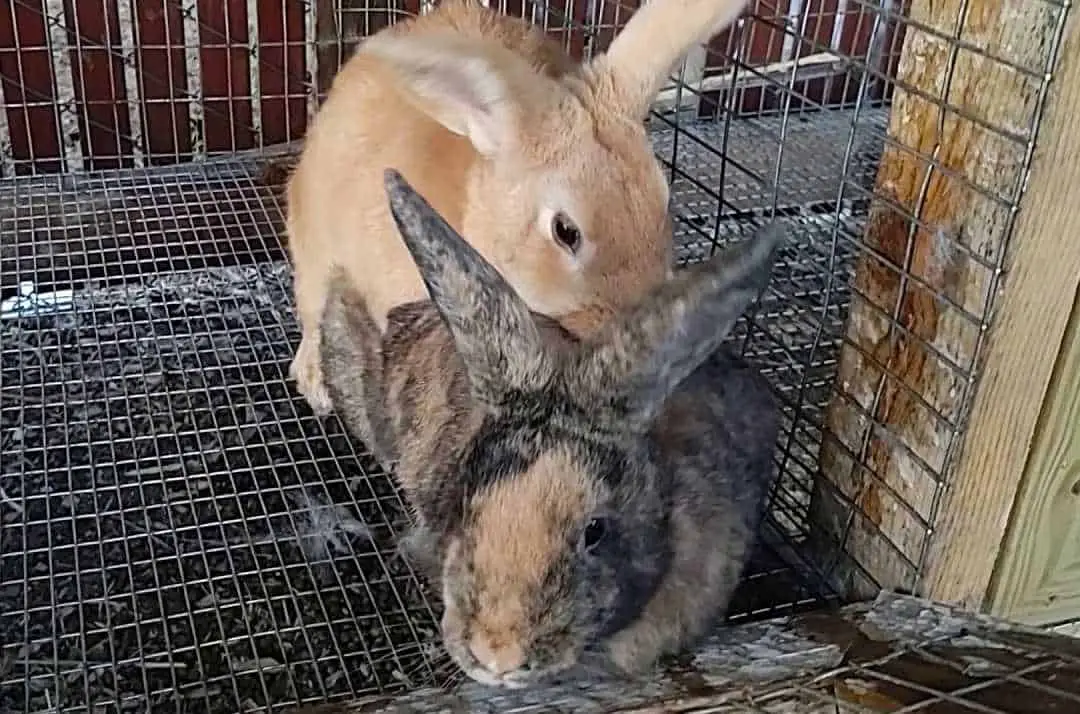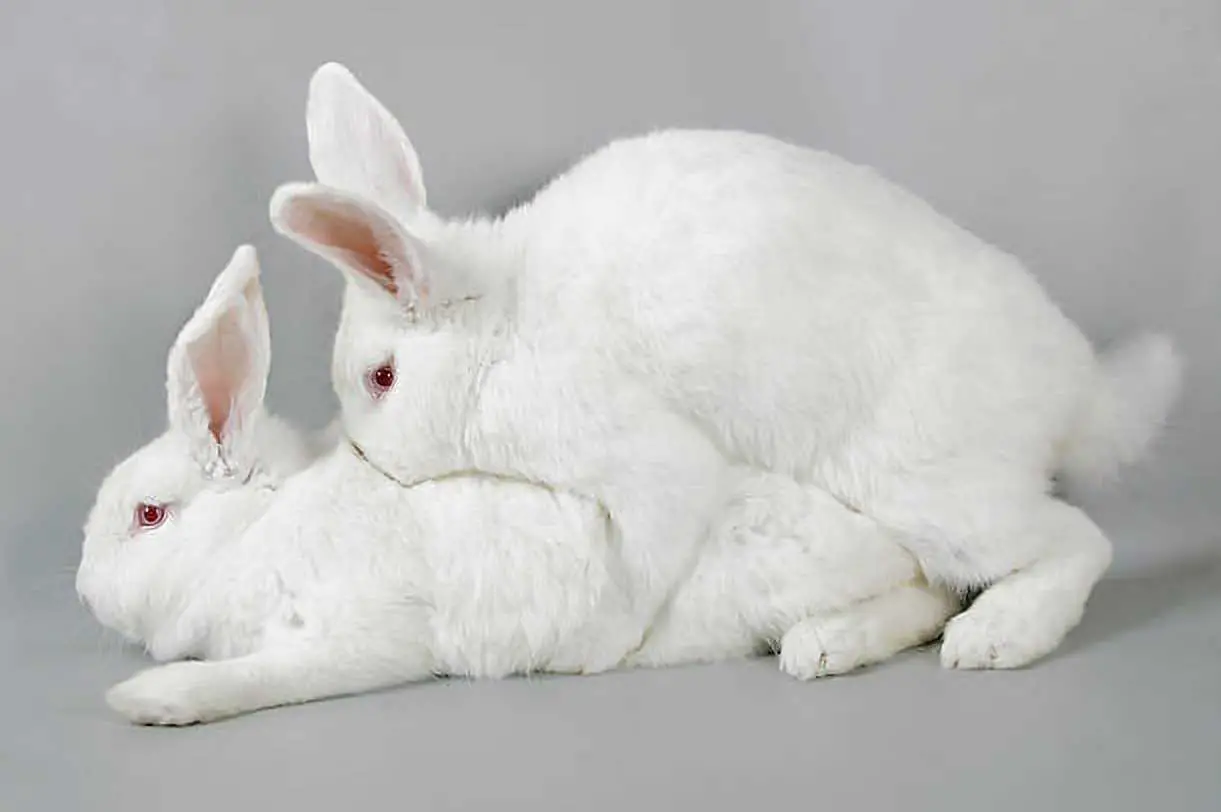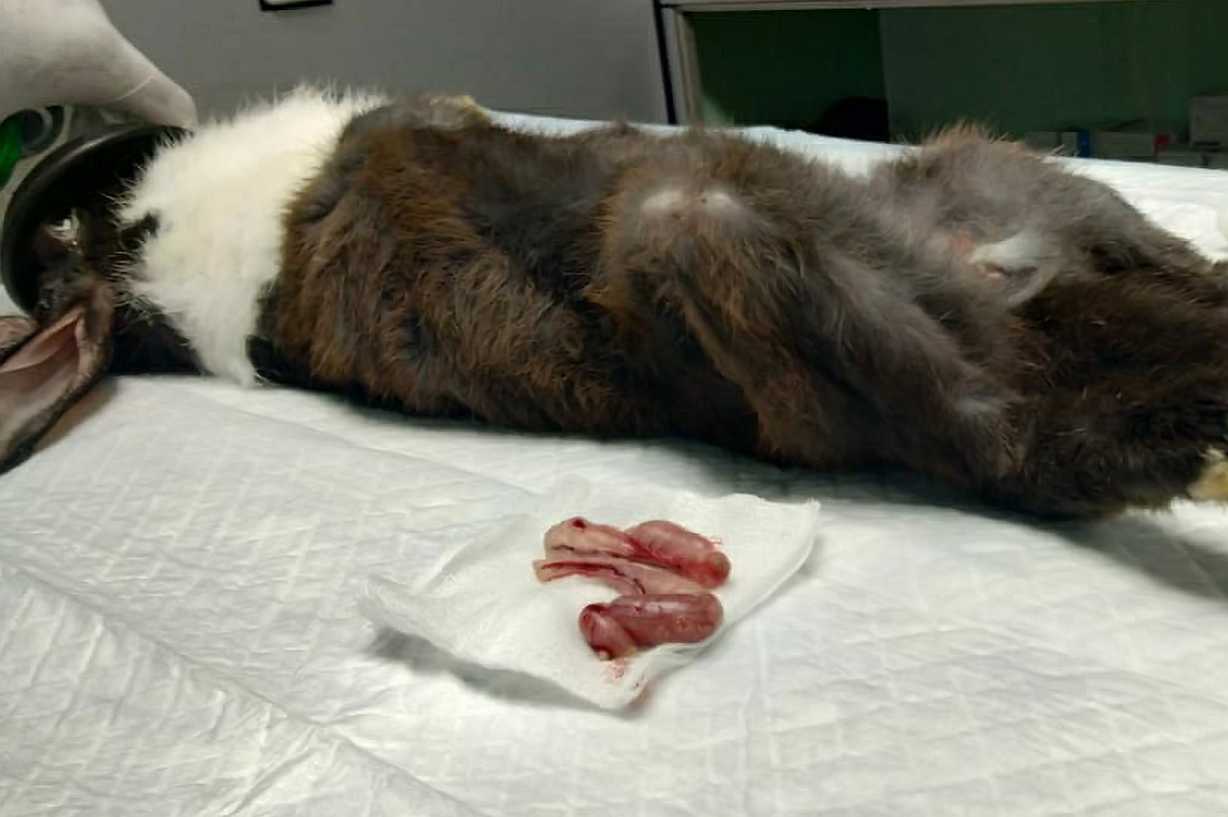Want to know everything there is to know about rabbit reproduction? We might be able to help with that because today, the talk is about exactly that! Whether you are thinking of breeding your rabbits, or you are only curious, allow us to help! Well, let’s not delay this any longer. Let’s go!
What to Know About Rabbit Reproduction
It is no secret that rabbits are prolific breeders. Of all the animals out there, they are one of the best at breeding. It might be hard to believe that with these cute and cuddly creatures. We know! However, allow us to show you how true the old line “breeding like rabbits” is.
Rabbits reach sexual maturity as early as around 3.5 to 9 months, depending on their size. You can expect smaller rabbits to sexually mature earlier than their larger counterparts.
Their gestation period only lasts around 30 days, which is a lot shorter than many other animals. To give you an idea: a dog and a cat’s gestation period is around 60 days. If that is not amazing enough, they can give birth to as many as 14 kits!
Generally, the shorter the gestation period, the larger the litter. On the flip side, the longer the gestation period, the smaller the litter size.
Finally, a doe can get pregnant again immediately after giving birth. However, this is not ideal. With all that, you can see that it’s as if rabbits are born only to reproduce more rabbits! We now have the basics down. Now, let’s dig in deeper. Let’s start with the doe.
What to Know About Rabbit Reproduction and the Doe
A female rabbit is known as a doe. As you might have already seen, the whole reproductive process of rabbits is different from humans. The release of eggs in the doe does not come in cycles. Instead, the act of mating sets it off.
Even if rabbits seem wired to keep producing more rabbits, the doe is not always ready to mate. You can tell a doe is open to mate when the genital area is somehow red and moist. On the other hand, it would be pale and dry if the doe is not receptive.
There are other ways to tell if a doe is ready to mate. For example, it can directly let you or a buck know it is not ready to mate. We will talk a little more about this later.
To add, it is only the doe that has nipples, and she has around 10 of them. As you can see, the nipples could be a marker when sexing rabbits. However, they could be hard to find if a doe has never had a litter yet. So, you might want to keep that in mind when sexing your rabbits.
What to Know About Rabbit Reproduction and the Buck
A male rabbit is known as a buck. Bucks don’t have heat cycles. They almost always have this need to mate. Also, as we have said, the buck doesn’t have any nipples.
What to Know About Rabbit Reproduction and Breeding
We have examined the internal aspects of rabbit reproduction. Now, let’s focus on the external behaviors and processes.
Of course, we need a doe and a buck to mate first before all of the things that happen inside take place. Again, even if rabbits seem wired to keep making more rabbits, mating doesn’t just take place.
First, like many others, rabbits take part in a mating ritual, where there would be dancing. If the doe accepts, there could be boxing. If the doe rejects, then she might run away.
If all goes well, the mating ritual would also include biting as the buck would use his teeth to get a hold of the doe before mounting. It might all look a little violent, but don’t worry. It’s normal.
In the wild, the act takes place naturally. If you are trying to breed your doe and buck, though, you would have to help. You want the female and the male to mate in the male’s hutch or on neutral ground for one. If done the other way around, results could be unpleasant.
The ending could be dramatic. The buck could fall off and let out a cry. This time, the doe could be the one to bite the male! It might look strange and maybe even a little chaotic, but you don’t have to worry. Again, it’s normal.
What to Know About Rabbit Reproduction and Kits
We have talked about the basics. We also discussed the doe and the buck. We can’t forget we also touched on the mating process. Now, let’s focus on the products of rabbit reproduction – the baby rabbits.
Baby rabbits, also known as kittens or kits, don’t come out looking like cuddly rabbits. They look pretty helpless at first, and they are. They don’t have any fur, nor can they see or hear. In the first few days of their lives, their sense of scent is all they rely on. Along with mama rabbit, of course!
The doe has a big role in raising the rabbits. The buck? Well, not so much. If we are talking about domestic rabbits, it would even be a good idea to separate them from the mama rabbit and the babies during the weaning period.
As we have said earlier, the gestation period is pretty fast. With that, you might not be surprised to know it is possible to feel the fetuses as early as the 12th day.
With rabbits, many little ones die before they are even born. On the other hand, there are what you would call false pregnancies. Here, a doe could show signs of being pregnant despite not being so. As you can see, rabbit reproduction may be fascinating on one side. However, it has its fair share of mystery on the other.
The baby rabbits, also known as ‘kits’, need to be weaned before you can separate them from the mother. After that, they should be fine. However, they can become a lot of trouble when they reach puberty and are not yet neutered or spayed. With that, let’s talk about spaying and neutering next.
What to Know About Rabbit Reproduction and Spaying or Neutering
Finally, let’s talk about spaying and neutering. As we have said above, rabbits are prolific breeders. However, if you don’t plan to breed them, you might want to consider spaying and neutering them.
Rabbits can be spayed and neutered as early as around four months of age. Still, you would want to consult with your vet. Some professionals would advise you to wait longer. However, you don’t want to wait too long. Otherwise, it might become too challenging for you and your furry friend.
As you would expect, neutering and spaying have some risks. Albeit, they are much safer now than before. Still, there are risks, so you might wonder if it is needed.
Neutering and spaying are advisable for many reasons. For one, they help with many negative sexual behaviors. That is not all, though. Health concerns are probably the main reason it is advisable to neuter or spay your rabbits.
Rabbit Reproduction, Spaying or Neutering, and Health Issues
If you ask, many would tell you that one of the secrets to keeping a happy and healthy rabbit would be spaying or neutering. There is a truth in that.
Not neutering or spaying your rabbits puts them at greater risk for several health issues, such as problems in their reproductive system. For example, they would be at greater risk for testicular tumors and pyometra than when they are fixed.
Yes, there are risks with neutering and spaying. Still, as you can see, all the benefits are worth the risk. To minimize the risk, you might like to read more about neutering. To add, you would want to look for a rabbit-savvy vet around your area.
Summary of Rabbit Reproduction: Everything You Need to Know
Today, we talked about rabbit reproduction. First, we discussed the basics and got to know just how amazing rabbits are as breeders. For one, we found out how early they reach sexual maturity and how short their gestation period is.
We, then, focused on the doe and buck. Here, we pointed out the difference between the two when it comes to rabbit reproduction. After that, we went ahead and briefly talked about breeding and mating. Here, we discussed what happens on the outside before things move on the inside.
Of course, we also talked about the product of all this – the baby rabbits! Finally, we discussed neutering and spaying. Hopefully, it will help you decide if you should neuter or spay your little furry friend.
We hope we can help you in your endeavor to know everything you need to know about rabbit reproduction!




